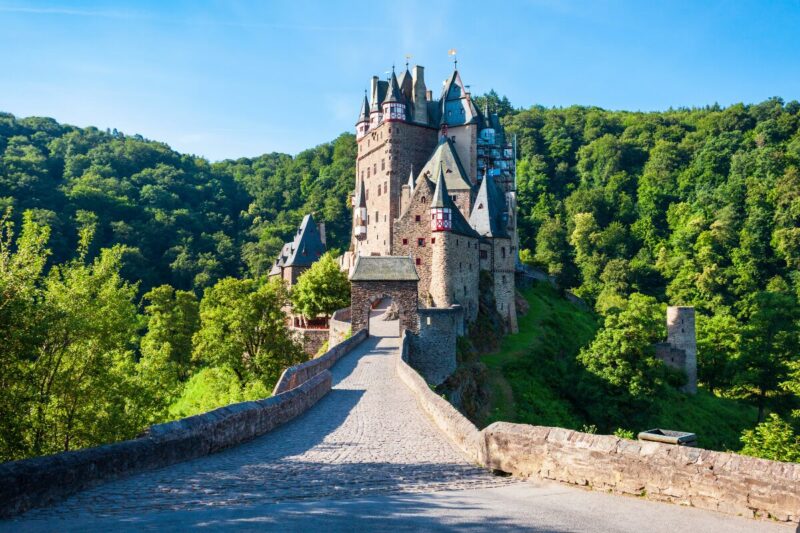Germany is one of the most historically significant countries in Europe, with sites spanning from ancient Roman settlements to Cold War landmarks. For travelers interested in architecture, politics, or military history, few places offer such variety and depth.
This guide covers the top historical locations in Germany – destinations with cultural and political weight, architectural relevance, and logistical practicality for modern visitors.
Berlin: Key Sites From Empire to Reunification
Berlin is not only Germany’s capital but its historical epicenter. The city provides a comprehensive view of modern European history in a single location.
- Brandenburg Gate: Once a symbol of division, now represents reunification.
- Memorial to the Murdered Jews of Europe: A central Holocaust memorial near the Reichstag.
- Berlin Wall Memorial (Bernauer Straße): Preserved sections of the original wall, including guard towers and death strip.
- Checkpoint Charlie: Former border crossing between East and West Berlin, now a museum and photo point.
Berlin offers one of the most direct and unfiltered experiences of 20th-century European history, particularly relevant for those studying modern geopolitics and Cold War architecture.
If Berlin captivates your interest as more than just a travel destination, you can find here a complete relocation guide with everything you need to consider for a move to Germany.
Munich: Royal Legacy and Cultural Continuity
While Berlin shows the scars of war and division, Munich exemplifies continuity. It was the capital of the Kingdom of Bavaria and remains a city rooted in tradition, royal architecture, and artistic heritage.
- Munich Residenz: A former royal palace, now one of Europe’s most comprehensive palace museums, featuring baroque, rococo, and neoclassical wings.
- Nymphenburg Palace: A vast baroque estate with landscaped gardens and lavish interiors—birthplace of King Ludwig II.
- Feldherrnhalle & Odeonsplatz: Historic sites tied to both royal processions and early Nazi rallies
- Asamkirche: A compact but ornately decorated rococo church built by the Asam brothers
Munich’s preservation efforts make it ideal for travelers interested in pre-20th-century history. For visitors who want a well-informed, local perspective, cultural companions from Louisa agency can offer private introductions to the city’s artistic layers.
Neuschwanstein Castle: Bavaria’s Symbol of Idealism
Commissioned by King Ludwig II in the 19th century, Neuschwanstein Castle is a visual landmark built more for fantasy than for defense.
- Located near Füssen in southern Bavaria
- Combines Romanesque and Gothic Revival styles
- Interiors inspired by Germanic legends and Wagner’s operas
- Notable rooms: Throne Hall, Singers’ Hall, King’s Bedroom
Despite its late construction date, it has become one of Germany’s most visited and photographed sites. Booking tickets in advance is essential, especially during high season.
Cologne Cathedral: Endurance in Gothic Form
Construction of the Cologne Cathedral (Kölner Dom) began in 1248 and concluded in 1880, spanning over six centuries.
- Twin towers stand at 157 meters
- UNESCO World Heritage Site
- Holds the Shrine of the Three Kings, a major pilgrimage relic
- Survived WWII bombings with minor damage
The cathedral’s resilience makes it a historical and engineering marvel. The 533-step climb to the south tower platform offers panoramic views of Cologne and the Rhine.
Heidelberg Castle: Electoral Prestige and Romantic Ruin
Overlooking the city of Heidelberg, this red sandstone castle was the seat of the Prince Electors of the Palatinate.
- Dates back to the 13th century
- Partially destroyed during the Nine Years’ War and lightning strikes
- Contains the Great Wine Barrel (220,000 liters)
- Hosts the German Pharmacy Museum
The combination of its elevated location and partial ruin status creates one of the most iconic images of German romanticism. It’s best viewed from the Philosopher’s Walk across the Neckar River.
Trier: Germany’s Roman Capital
Trier, founded in the 1st century BCE, is the oldest city in Germany and home to multiple Roman-era monuments.
Key sites include:
- Porta Nigra: The largest preserved Roman gate north of the Alps
- Imperial Baths (Kaiserthermen): Large Roman bath complex
- Basilica of Constantine: Former Roman throne room, now a Protestant church
- Roman Amphitheater: Used for public games and later executions
Trier’s compact old town allows efficient walking access between monuments. The city also blends Roman infrastructure with medieval and baroque structures.
Wartburg Castle: The Reformation Stronghold
Located above Eisenach, Wartburg Castle holds significance for both religious and cultural history.
- Site where Martin Luther translated the New Testament into German (1521–1522)
- Residence of Saint Elizabeth of Hungary in the 13th century
- Associated with the Sängerkrieg (Minstrels’ Contest), which inspired Wagner’s Tannhäuser
- UNESCO World Heritage Site
The preserved interiors are among the most detailed of any German castle, and the site continues to host exhibitions related to the Reformation and German literature.
Nuremberg: Courtrooms and Imperial Architecture
Nuremberg represents a dual legacy: imperial heritage and post-WWII justice.
- Imperial Castle (Kaiserburg): A major medieval stronghold of the Holy Roman Empire
- Old Town (Altstadt): Reconstructed after WWII, notable for half-timbered buildings
- Documentation Center Nazi Party Rally Grounds: Museum detailing the Nazi regime’s use of the city for propaganda
- Memorium Nuremberg Trials (Room 600): Site of the post-war military tribunals
This makes Nuremberg essential for visitors interested in both the height of imperial power and the legal aftermath of the 20th century.
Dachau: Memorial Site and Historical Record
Dachau Concentration Camp, established in 1933, was the first Nazi concentration camp. Located 16 km northwest of Munich, it served as a model for others.
Visitor features:
- Original barracks and administrative buildings
- Crematorium and gas chamber
- Permanent exhibition on the rise of Nazism, prisoner experiences, and liberation
- Memorial sculptures and chapels erected post-1945
The site functions as both an educational center and a place of remembrance. Audioguides and on-site tours are available in several languages.
Site Comparison Table
| Site | Era | Notable Feature | Recommended Time |
| Berlin Wall Memorial | Cold War (1961–89) | Preserved border infrastructure | Half day |
| Neuschwanstein Castle | 19th Century | Fantasy architecture, mountain setting | Full day |
| Cologne Cathedral | 13th–19th Century | Twin towers, pilgrimage relic | 2–3 hours |
| Heidelberg Castle | 13th–17th Century | Ruins, pharmacy museum, panoramic views | Half day |
| Trier Roman Sites | 1st–4th Century CE | Roman gate, baths, amphitheater | Full day |
| Wartburg Castle | 11th–16th Century | Reformation heritage, Luther’s room | Half day |
| Nuremberg | Medieval + 20th C | Nazi trials, medieval castle | 1–2 days |
| Dachau Memorial | 20th Century | Holocaust education site | Half day |
Conclusion
Germany’s historical landscape is vast and well-preserved. Each site mentioned in this guide offers visitors a distinct chapter in the country’s evolution—imperial rule, religious reform, cultural shifts, totalitarian regimes, and eventual reunification.
Travelers who prioritize substance over spectacle will find Germany’s historical sites both informative and moving. Whether your interests lie in Gothic architecture, ancient Rome, political history, or memory culture, Germany remains one of the most well-curated destinations for serious historical travel in Europe.

